Pokemon Go: Trailblazer that could redefine mobile games
- Published
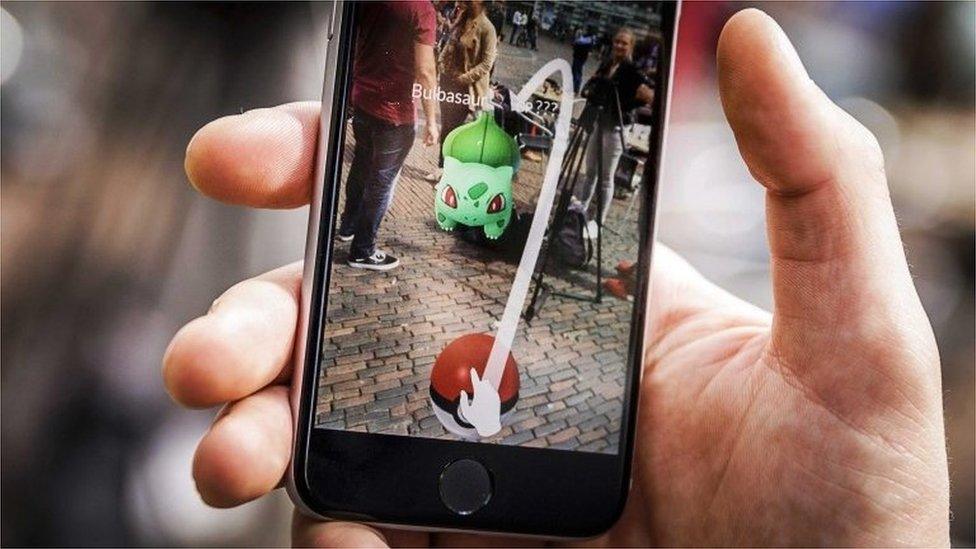
Pokemon Go has launched in the UK, US, Germany and Australia
It seems stranger than fiction, but Pokemon Go - an app that has triggered a global phenomenon where millions of people obsessively capture small creatures in public spaces - was first introduced as an April Fool's Day joke.
In 2014, YouTube published a mock sales pitch, external called Google Maps: Pokemon Challenge, which showed the corporation's maps app overtaken by colourful monsters.
The video asked recruits to track down these critters using their phone's GPS location data, and then capture them using their camera.
If you are still unsure about how to play Pokemon Go, or what it is, Google's prank provides a pretty good guide.
It's perhaps no coincidence that the studio that developed today's blockbuster app, Niantic Labs, is itself a spin-out from Google.
Up until now, the central concept of mobile games has been something that can be enjoyed anywhere. They are pit-stops in daily routines.
But few games encourage playing while on the move like Pokemon Go does.
In order to succeed, players have to travel to destinations and visit landmarks previously unknown to them.
In doing so, the Pokemon Company - and Nintendo, which has a large stake in it - may have just harnessed the true potential of mobilised gaming.
The BBC's Chris Foxx took to the streets to explore some of the app's highs and lows
This a watershed moment for augmented reality in particular.
The concept has been around for more than a decade but has never before achieved this level of mainstream awareness.
Augmented reality games use a device's sensors to mix together the virtual and real worlds, allowing players to, for instance, fight a dragon circling Big Ben or take down a spaceship zipping through your lounge.


Innovations, as self-evidently important as they are, don't tend to write the history of the games industry. Usually, it is the trendsetters that shape its future.
Doom wasn't the first shooter that depicted the world through the eyes of its hero, Street Fighter 2 wasn't the first one-on-one brawler, and Candy Crush was hardly the first game of rearranging items in lines, but all three were the trailblazers that set their respective genres alight.
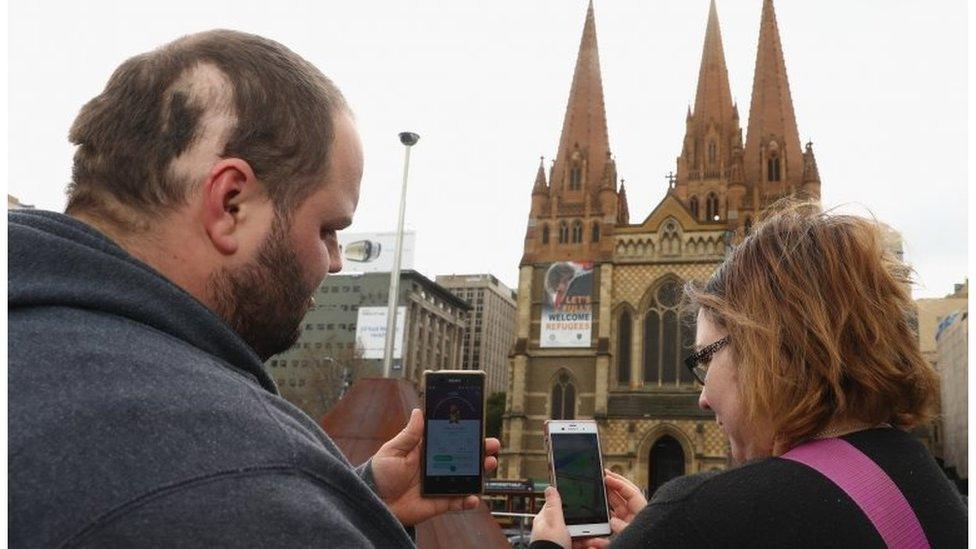
Pokemon Go gamers congregate close to landmarks where rare monsters can be captured
Pokemon Go is not even the first augmented reality title to win critical acclaim.
In 2012, London developer Six to Start released Zombies, Run!, an audio-only exercise game that tasks joggers with fleeing from the undead, with the sounds of groans in their ears.
A year later, developer Niantic Labs released Ingress, which tasks players with finding virtual items dotted around the real world using a smartphone's GPS.
Although it has since been downloaded more than 14 million times, it is now perhaps best known for being the precursor to the same studio's Pokemon-themed follow-up.

Niantic's previous game, Ingress, got positive reviews but did not become a household name
The likelihood that other developers are now frantically working on games with similar conceits - collecting and interacting with virtual items in the real world - is very high.
Walking billboards
What Pokemon Go has demonstrated so effectively is that augmented reality games can be extraordinarily viral if developed in a certain way.
On social media, thousands of players are posting images of Pokemon creatures dwelling in random locations and historical landmarks. This in itself has become a game of one-upmanship, to the extent that one Twitter user even snapped a picture of a monster while he was being pulled over by the police.
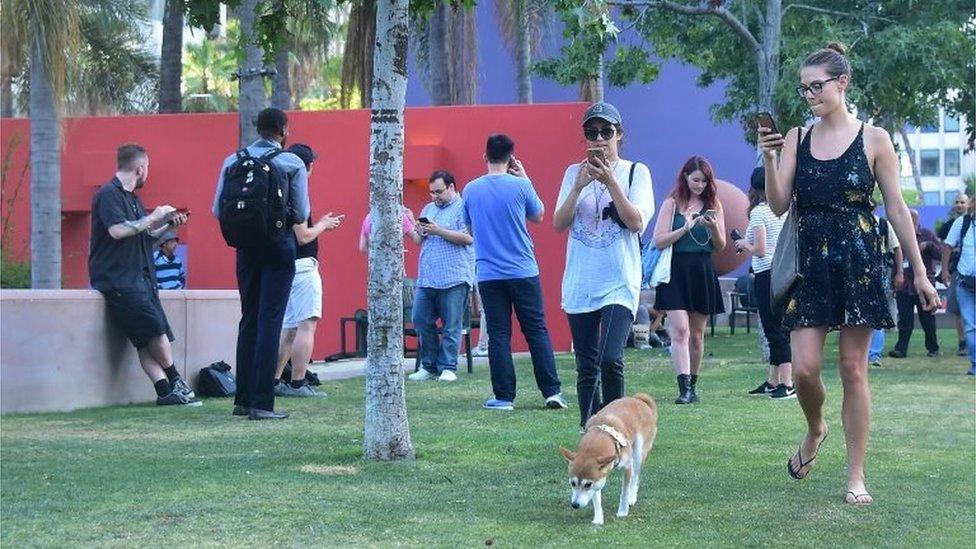
The app charges fees for extra lures to capture the monsters and egg incubators to hatch new Pokemon amongst other virtual items
It is Pokemon Go's presence in the real world that sets it apart.
Its millions of players have effectively become walking advertisements by shuffling through busy streets with their smartphones held aloft, in the hope of catching their next creature.
Popular sightseeing locations, such as New York's Central Park, as well as more obscure ones, including an Australian suburb, external, have been bustling with crowds of players looking for rarer and elusive Pokemon.

Some features are unavailable if the user is travelling at speed, to discourage its use in cars
For now, the game is a little barebones and free to play. Its developer currently makes money from the optional power-ups and virtual items that can be bought within the title.
But Niantic is already in talks with various companies who want to buy sponsored locations within the game.
This is a new kind of revenue stream for a games developer and, at a time where traditional income routes are somewhat challenged, is something that will certainly turn heads if successful.
Pikachu pops up on Downing Street
The iPhone and Android have revolutionised the games industry by ushering in a new era of lightweight and compulsive games enjoyed in small chunks; on commutes into work and while queuing at the Post Office.
Pokemon Go takes that idea one step further. Here, the great outdoors isn't just a place to play games, but now an interactive playground to explore.
Rob Crossley was GameSpot's first UK editor, and previously worked for video games sites including Develop, Edge and CVG.
- Published14 July 2016
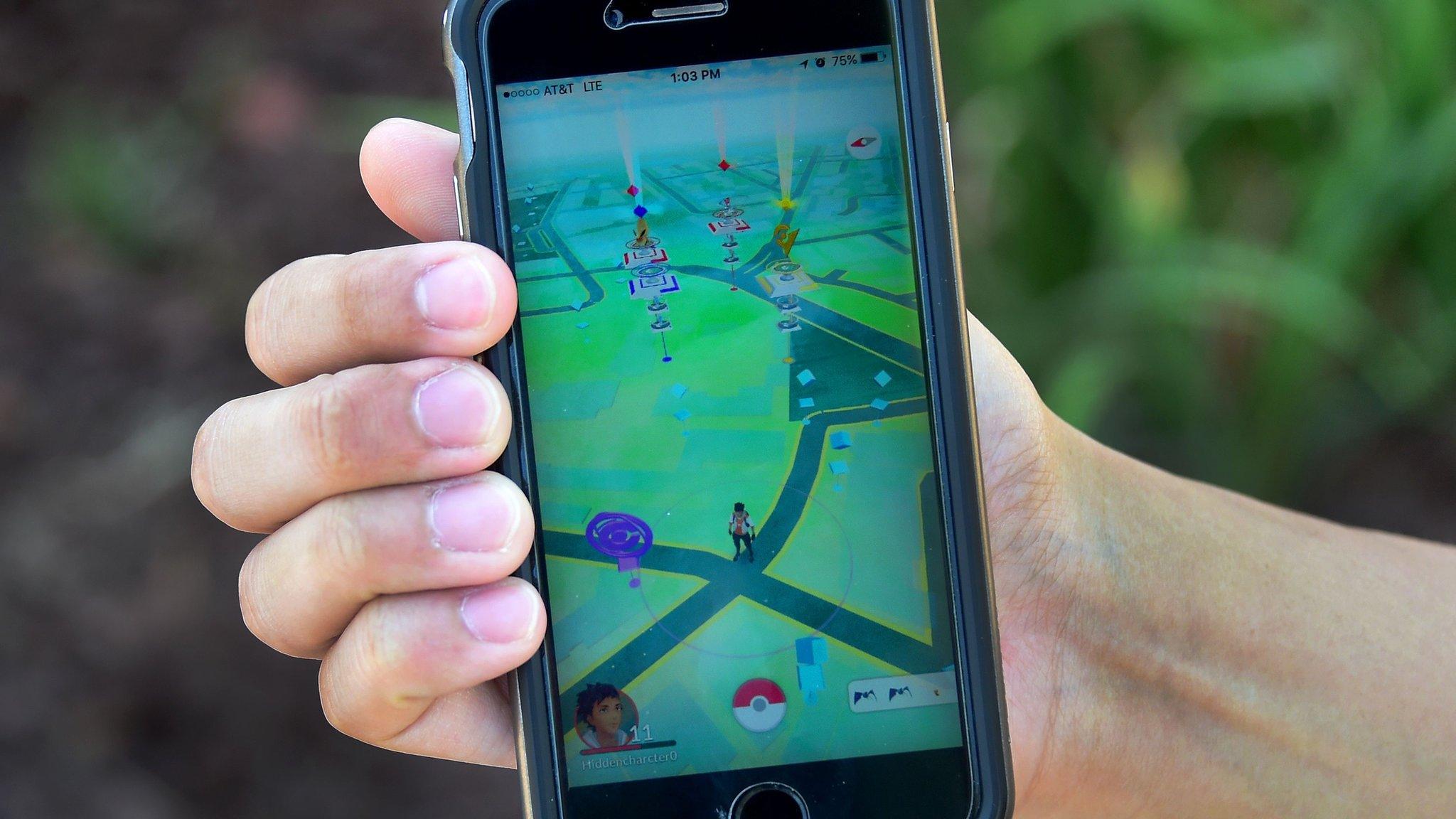
- Published11 July 2016
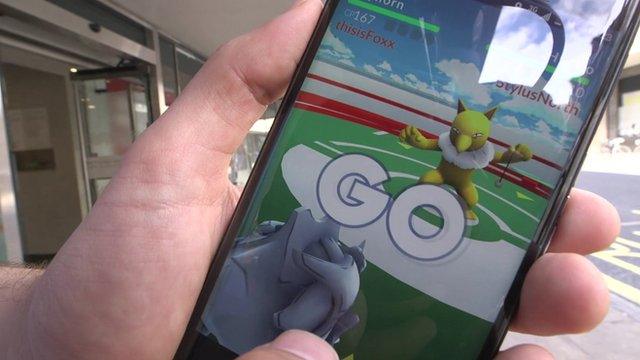
- Published14 July 2016
